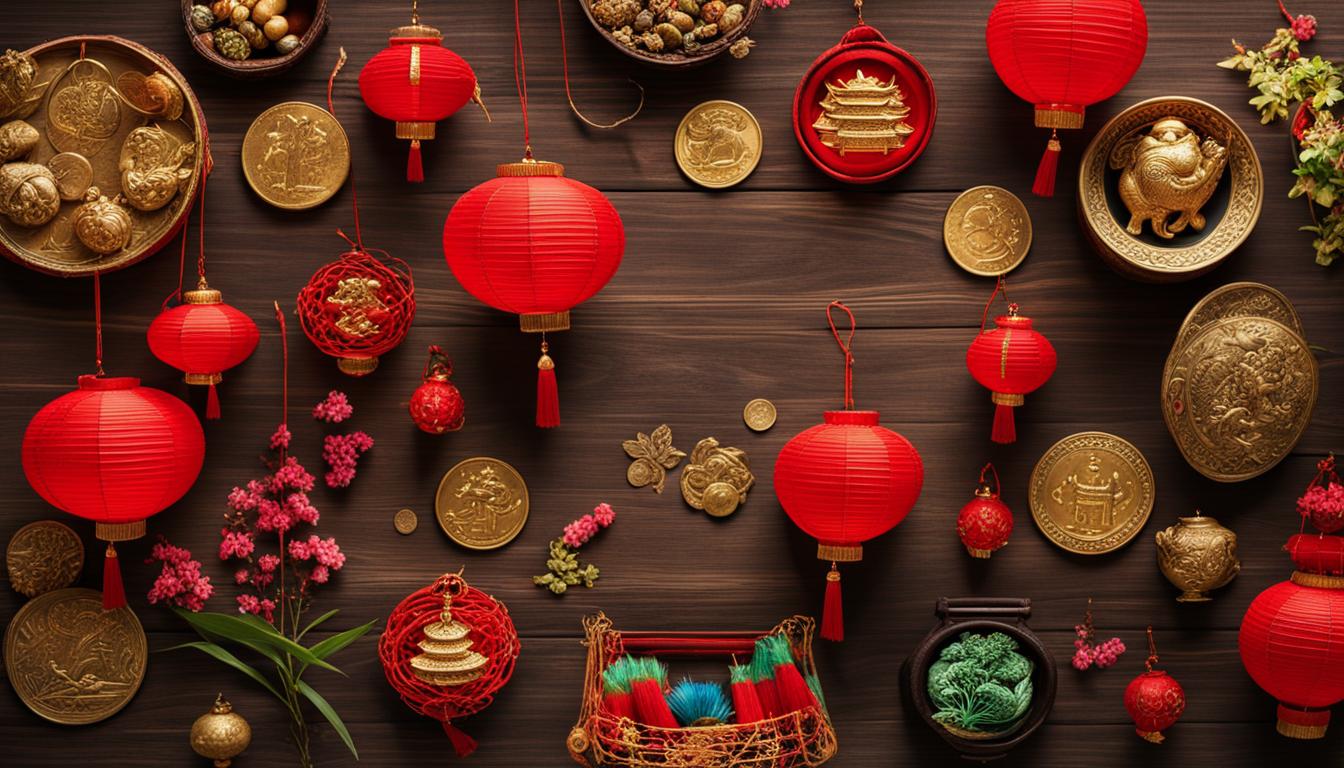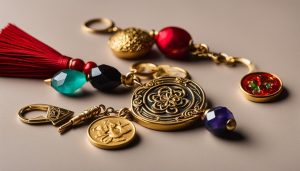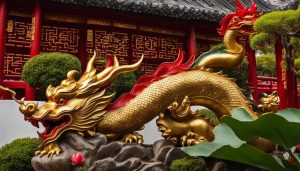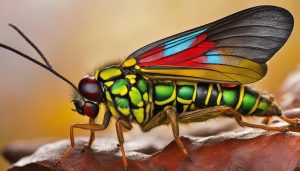Cultures in Asia have a rich tapestry of traditions and superstitions when it comes to attracting good luck and prosperity into their homes. From Feng Shui practices to traditional objects and auspicious items, Asians embrace diverse beliefs that span across countries and generations. Let’s explore some of the popular symbols and customs that Asians hold dear to invite good luck and positive energy into their households.
Contents
- 1 Good Luck Rituals in India: Milk Spilling and Vastu Shastra
- 2 Chinese New Year: Fish and Firecrackers
- 3 Japanese Good Luck Charms: Daruma Dolls and Maneki Neko
- 4 Thai Beliefs: Nang Kwak and Lucky Colors
- 5 Korean Superstitions: Lunar New Year and Pig Dreams
- 6 Conclusion
- 7 FAQ
- 7.1 What are some traditional items and customs Asians believe bring good luck and positive energy into their households?
- 7.2 Why is spilling milk in an easterly direction considered auspicious during housewarming ceremonies in India?
- 7.3 How does eating a whole fish during Chinese New Year bring prosperity?
- 7.4 What is the significance of the Daruma Doll and Maneki Neko in Japan?
- 7.5 How is the Nang Kwak figurine used for prosperity in Thailand?
- 7.6 What is the significance of the Baci Ceremony in Laos and Thailand?
- 7.7 Why do Koreans avoid washing their hair on Lunar New Year?
- 7.8 What does dreaming of pigs signify in Korean culture?
- 7.9 What is the significance of the cultural beliefs surrounding good luck items and customs in Asian households?
- 8 Source Links
Key Takeaways:
- Asian households incorporate various practices and objects to attract good luck and prosperity.
- Feng Shui and traditional objects play a significant role in Asian home decor.
- Popular symbols, such as lucky charms and blessings, are prevalent in Asian cultures.
- Beliefs and practices vary across different Asian countries, each with its own unique traditions.
- These customs reflect the cultural heritage and deep-rooted beliefs of Asian communities.
Good Luck Rituals in India: Milk Spilling and Vastu Shastra
In India, the Griha Pravesh Puja, or housewarming ceremony, holds great importance. One ritual involves spilling milk in an easterly direction, following the principles of Vastu Shastra, similar to Feng Shui. Spilling milk towards the east is believed to attract luck, prosperity, positivity, and good health to the household. However, spilling milk before or after a wedding day is considered inauspicious. This ritual showcases the cultural beliefs surrounding attracting good luck and begins the auspicious journey of a new home.
Indian homes are often designed and built according to Vastu Shastra, an ancient architectural science that emphasizes the placement and orientation of various elements within a space to create harmony and positive energy flow. Vastu Shastra suggests specific directions that are considered auspicious for different areas of a house. For example, the northeast corner is associated with prosperity and wealth, making it an ideal location for a prayer room or the kitchen. The east is considered auspicious for placing a main entrance, as it is associated with new beginnings and opportunities.
By incorporating these rituals and practices into their homes, Indians aim to create an environment that is conducive to attracting good luck, positive energy, and prosperity. Whether it’s through the simple act of spilling milk or following the guidelines of Vastu Shastra, these traditions provide a sense of cultural identity and belief in the power of attracting good fortune.
| Direction | Auspicious Areas |
|---|---|
| Northeast | Prayer room, kitchen |
| East | Main entrance, living room |
| North | Study room, business area |
| West | Bedroom, dining area |
| South | Master bedroom, bathroom |
Embrace the rich cultural heritage of India by incorporating these good luck rituals and practices into your own home. Whether you choose to spill milk in an easterly direction or follow the principles of Vastu Shastra, these traditions can bring a sense of positivity and prosperity to your living space. So, go ahead and invite good luck into your home the Indian way.
Chinese New Year: Fish and Firecrackers
Chinese culture is rich with traditions and customs, and Chinese New Year is no exception. The celebration is filled with symbolic rituals believed to bring good luck and ward off negativity. Two prominent customs associated with Chinese New Year are the consumption of fish and the use of firecrackers.
Fish holds deep symbolism in Chinese culture and is considered a harbinger of prosperity. Eating a whole fish during the Chinese New Year feast is believed to bring abundance and wealth. The word for fish, “yu,” sounds similar to the word for prosperity. By enjoying a whole fish, it is believed that you are inviting good fortune and financial success into your life.
Firecrackers also play a significant role in Chinese New Year celebrations. The tradition of lighting firecrackers is believed to scare away evil spirits and misfortune and to bring good luck and fortune for the coming year. The loud noises created by the firecrackers symbolize the banishment of negativity and the welcoming of positive energy and joy.
| Chinese New Year Traditions | Symbolism |
|---|---|
| Eating a whole fish | Prosperity and abundance |
| Lighting firecrackers | Scaring away evil spirits and attracting good luck |
These traditions are deeply ingrained in Chinese culture and are celebrated with enthusiasm and joy during Chinese New Year festivities. The symbolic importance of fish and firecrackers adds an extra layer of meaning to the holiday, making it a time of renewal, hope, and good fortune.
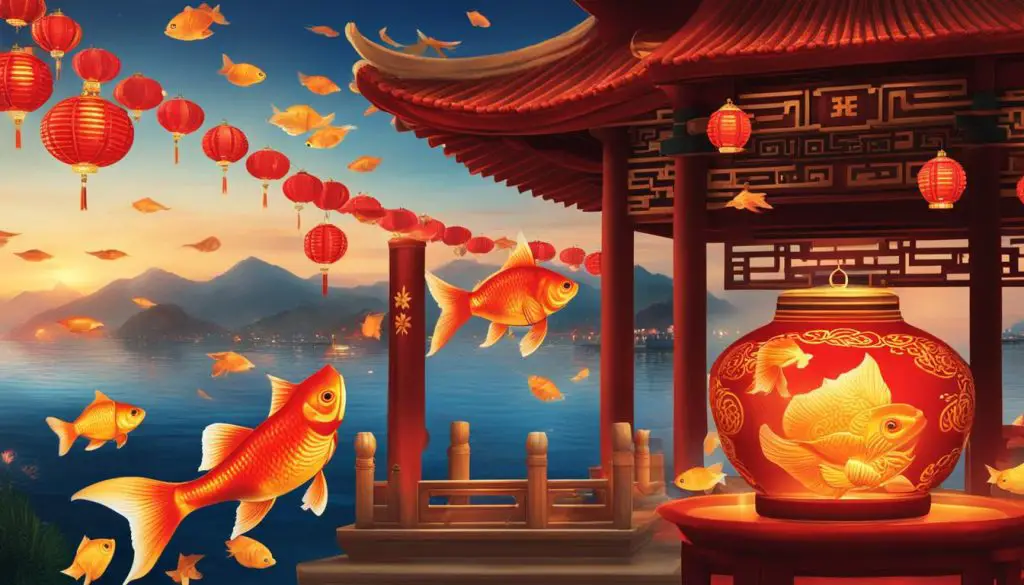
Japanese Good Luck Charms: Daruma Dolls and Maneki Neko
Japan has a rich cultural tradition of using good luck talismans to attract prosperity and positive energy. Two widely recognized symbols of good luck in Japan are the Daruma Dolls and the Maneki Neko, both of which have unique meanings and significance.
Daruma Dolls
The Daruma Doll is a popular talisman that represents the founder of Zen Buddhism, Bodhidharma. These round, paper-maché dolls are typically painted red and have blank white eyes. When setting a goal or making a wish, the individual fills in one of the eyes, symbolizing their commitment. Once the goal is achieved, the other eye is filled in, signifying the fulfillment of the wish or accomplishment. The Daruma Doll serves as a constant reminder of one’s aspirations and motivates individuals to persevere until they reach their desired outcome.
Maneki Neko
Another well-known Japanese talisman is the Maneki Neko, often referred to as the lucky money cat. This beckoning cat figurine is often found in shops, restaurants, and homes, inviting good fortune and prosperity. The Maneki Neko is usually depicted with one paw raised in a waving motion, beckoning wealth and customers. The color of the cat’s coat also holds significance, with calico cats believed to bring the most luck. Placing a Maneki Neko in specific areas, such as near the entrance or on a cash register, is believed to attract good business and financial success.
Both the Daruma Dolls and the Maneki Neko play significant roles in Japanese culture and are commonly used as decorative items in homes and businesses. These good luck charms are not only visually appealing but also serve as constant reminders of the Japanese belief in attracting good luck and positive energy.
| Symbol | Meaning |
|---|---|
| Daruma Dolls | Represent the founder of Zen Buddhism and help individuals set and achieve their goals. |
| Maneki Neko | Beckoning cat figurine believed to attract wealth, customers, and good business. |
Thai Beliefs: Nang Kwak and Lucky Colors
In Thailand, the Nang Kwak figurine or Yantra Cloth is considered a symbol of prosperity, especially for merchants and salespeople. This benevolent spirit is believed to bring luck and success to businesses. The figurine depicts a woman sitting in a traditional Thai gesture of greeting, with her palm facing upwards. It is believed that keeping Nang Kwak in a prominent place, such as a storefront or office, will attract customers and increase sales. Many business owners regularly make offerings and pray to Nang Kwak for continued good fortune.
Thai people also have a belief connected to wardrobe choices based on lucky colors. Each day of the week is associated with a specific color, and wearing the color associated with the day of one’s birth is believed to bring good luck. Here is a list of the lucky colors for each day of the week:
- Monday: Yellow – symbolizes the moon
- Tuesday: Pink – associated with the planet Mars
- Wednesday: Green – connected to the planet Mercury
- Thursday: Orange – associated with the planet Jupiter
- Friday: Blue – connected to the planet Venus
- Saturday: Purple – associated with the planet Saturn
- Sunday: Red – connected to the planet Sun
This cultural tradition allows individuals to incorporate their lucky colors into their clothing choices, or even through gemstones and jewelry. It is common to see people in Thailand wearing the color associated with their birth day, as they believe it brings them luck and positive energy.
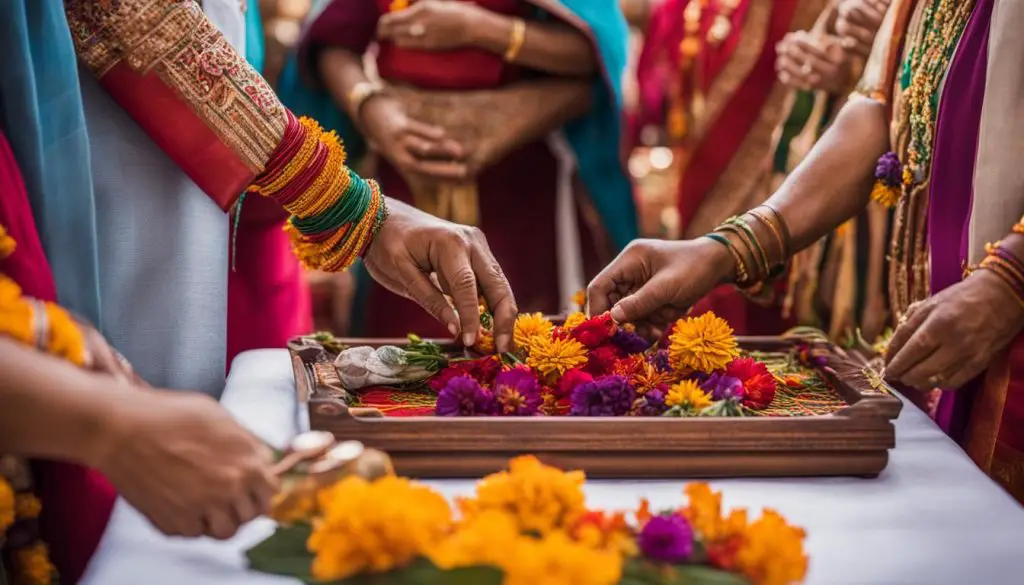
Lao Beliefs for Good Luck and Prosperity
The Baci Ceremony is just one example of the Lao beliefs and practices aimed at attracting good luck and prosperity. Lao people also engage in other rituals, such as making offerings to the spirits and seeking guidance from Buddhist monks. They believe that by paying respect to the spirits and following traditional customs, they can bring fortune and prosperity into their lives.
Additionally, Lao culture emphasizes the importance of community and interconnectedness. People come together to celebrate and support one another through various ceremonies, festivals, and gatherings. This sense of unity and communal harmony is seen as essential for attracting good luck and prosperity to individuals, families, and the entire community.
| Ritual | Symbolic Meaning |
|---|---|
| Tying of White Cotton Strings | Unity of the 32 spirits within a person |
| Calling Back the Guardian Spirits | Inviting blessings, protection, and positive energy |
| Making Offerings to the Spirits | Showing respect and gratitude for their role in everyday life |
| Seeking Guidance from Buddhist Monks | Receiving blessings, wisdom, and spiritual guidance |
Korean Superstitions: Lunar New Year and Pig Dreams
In Korea, Lunar New Year’s Day is a time of fresh starts and cultural beliefs that center around attracting good luck and prosperity. One intriguing superstition is the practice of avoiding washing hair on Lunar New Year. It is believed that washing your hair on this day will wash away your good luck for the year ahead. This belief stems from the idea that water symbolizes the cleansing of fortune, so it’s best to keep your locks untouched to preserve the positive energy.
In addition to the Lunar New Year tradition, Korean students have a superstition related to not washing their hair before an important test. It is believed that not washing their hair before exams will help them retain the knowledge they have gained, leading to better performance. This superstition showcases the importance placed on luck and fortune in academic success.
“Dreaming of pigs is seen as a sign of good luck and prosperity in Korean culture. Pigs are associated with fertility and wealth, and dreaming of them indicates potential success or a financial windfall.”
Another fascinating superstition in Korean culture is the significance of pig dreams. Dreaming of pigs is considered a positive omen symbolizing good luck and prosperity. Pigs are associated with fertility, wealth, and abundance, so dreaming of them suggests potential success or even a financial windfall in the future. This belief reflects the deep-rooted cultural beliefs in Korea surrounding the pursuit of fortune and the desire for a prosperous life.
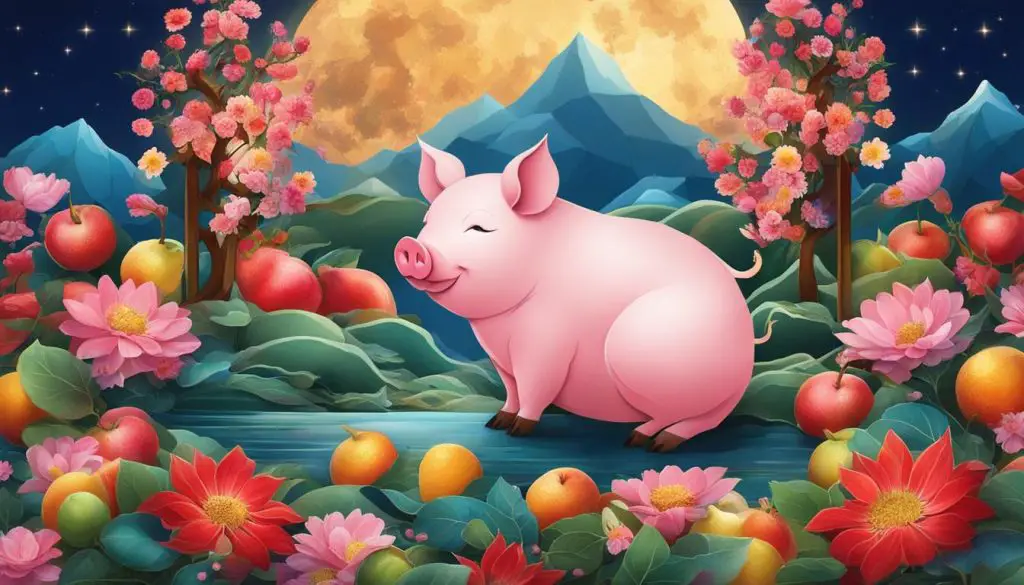
The Power of Superstitions
Korean superstitions related to Lunar New Year traditions and pig dreams highlight the significance of luck and good fortune in Korean culture. These beliefs, passed down through generations, shape the way Koreans approach important occasions and their aspirations for a prosperous future. Whether it’s avoiding hair washing, hoping for positive dreams, or incorporating other superstitious practices, these traditions bring a sense of excitement and hope for a year filled with luck and abundance.
Conclusion
Throughout Asia, cultural traditions for good luck are deeply ingrained in the beliefs and practices of the people. From India to Japan, diverse beliefs and customs are followed to attract good fortune and positive energy into Asian households. These traditions, while not scientifically proven, hold great significance and serve as a reminder of the rich cultural heritage in Asia.
Whether it’s the milk spilling ceremony in India, the use of lucky charms in Japan, or the tying of white cotton strings in Laos, each tradition showcases the unique and diverse beliefs for attracting good luck in Asian homes. These practices are passed down through generations and form an integral part of the cultural fabric of these societies.
As you explore Asian homes, keep an eye out for these auspicious items and customs. Embrace the tapestry of Asian beliefs in attracting good luck and prosperity, and appreciate the cultural traditions that contribute to the harmonious and prosperous lives of the people. In the end, it is the diversity of these beliefs that makes Asia a fascinating and vibrant continent.
FAQ
What are some traditional items and customs Asians believe bring good luck and positive energy into their households?
Some traditional items and customs include spilling milk in an easterly direction during housewarming ceremonies in India, eating a whole fish during Chinese New Year to attract prosperity, using lucky charms like the Daruma Doll and Maneki Neko in Japan, and performing the Baci Ceremony in Laos and Thailand to call back guardian spirits for good luck.
Why is spilling milk in an easterly direction considered auspicious during housewarming ceremonies in India?
Spilling milk towards the east is believed to attract luck, prosperity, positivity, and good health to the household, following the principles of Vastu Shastra similar to Feng Shui. However, spilling milk before or after a wedding day is considered inauspicious.
How does eating a whole fish during Chinese New Year bring prosperity?
The word for fish sounds similar to the word for prosperity in Chinese, so eating a whole fish during the Chinese New Year feast is believed to bring prosperity. The head of the fish must be pointed towards the eldest family member, and the person facing the head of the fish should eat first.
What is the significance of the Daruma Doll and Maneki Neko in Japan?
The Daruma Doll is a talisman used to help people achieve their goals. The doll’s eyes are left blank, and individuals draw in the left eye to symbolize their goal. Once the goal is achieved, the right eye is drawn. The Maneki Neko, or lucky money cat, is believed to attract wealth, customers, and good business when placed in specific areas, such as offices or cash registers.
How is the Nang Kwak figurine used for prosperity in Thailand?
The Nang Kwak figurine or Yantra Cloth is considered a symbol of prosperity, especially for merchants and salespeople. It is believed to bring luck and success to businesses when placed in prominent areas.
What is the significance of the Baci Ceremony in Laos and Thailand?
The Baci Ceremony involves tying white cotton strings around a person’s wrists to call back the guardian spirits. It is performed by a respected elder and is believed to bring good luck, well-being, and prosperity to the individual. The tying of the strings represents the uniting of the 32 spirits within a person, bringing balance and harmony.
Why do Koreans avoid washing their hair on Lunar New Year?
Washing hair on Lunar New Year is believed to wash away good luck, so Koreans avoid doing so on this day. Similarly, Korean students believe that not washing their hair before a test will help retain the knowledge they have gained.
What does dreaming of pigs signify in Korean culture?
Dreaming of pigs in Korean culture is seen as a sign of good luck and prosperity. Pigs are associated with fertility and wealth, so dreaming of them indicates potential success or a financial windfall.
What is the significance of the cultural beliefs surrounding good luck items and customs in Asian households?
While the effectiveness of these rituals may not be scientifically proven, they hold great significance in Asian households and serve as a reminder of cultural heritage. These practices allow individuals to embrace their cultural beliefs in attracting good luck and prosperity into their homes.

